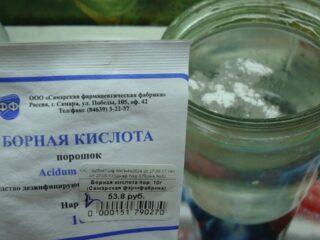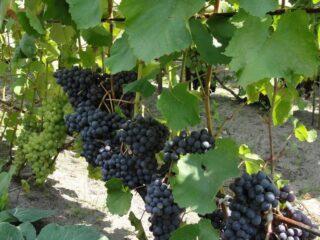Content
Alvika grapes are a hybrid obtained by an amateur breeder from Ukraine. It is distinguished by very large berries, the weight of which reaches 30 g. The taste is pleasant and harmonious. Grapes are used fresh for making juice and wine. Winter hardiness is very high, while the ripening period is early. This makes it possible to harvest a normal harvest even in the Black Earth and central regions.
History of origin
Alvika grapes were bred by amateur breeder V.M. Kalugin. (Zaporozhye region, Ukraine). This is a hybrid obtained on the basis of well-known varieties – Velika and Talisman. The variety is not included in the register of selection achievements. The grapes are cultivated in the regions of southern Ukraine and are also known to many Russian breeders.
Description of the Alvika grape variety
The hybrid is distinguished by large clusters and very large berries. The taste is pleasant, harmonious, ripening dates are early.
Bunches
The clusters are large, weighing on average from 600 to 900 g, specimens weighing more than 1 kg are often found, the record is 2 kg. Moreover, in the first years of fruiting, the clusters are not so large, and then they increase in size. The shape is wide-conical, the density of the berries is moderate. The legs are quite long and strong.
Berries
The berries are large, oval in shape, noticeably elongated lengthwise. They reach 25-30 g in weight, up to 5 cm in length, and 2.5 cm in width. The color is dark purple and blue. The fruits do not crack even with excessive watering and in rainy weather. They hold well in bunches and do not fall off within 3-4 weeks after ripening. Each fruit contains 2-3 small seeds. Due to the fact that the berries are large, the seeds are faintly felt.
Vine
The vine is strong and light brown in color. Ripens well, almost the entire length of the shoot. If you get cuttings, they root almost 100%.
Characteristics of Alvika grapes
Alvika is a hybrid, so it tolerates different weather conditions, including winter frosts. Productivity is consistently high and there is resistance to a number of diseases.

The fruits begin to ripen in mid-August
Ripening period of Alvika grapes
Alvika belongs to the early ripening (early) hybrids. The berries reach technical ripeness 95-110, less often 125 days after bud break. In the southern regions, the fruits ripen by mid-August, in the Black Earth Region - closer to the beginning of September.
Productivity
The yield of Alvika grapes is much higher than that of the original varieties - Velika and Talisman. However, specific data is not provided. In reviews, gardeners note that the bushes bear fruit consistently.
Taste of Alvika grapes
The taste is pleasant, seasoned, without nutmeg shades, the aroma is not pronounced.The pulp is pleasant, fleshy, juicy. Sweet notes are well felt; There are no data on tasting assessments.
Growing regions
Thanks to its high winter hardiness, Alvika grapes can be grown not only in the south of Russia, but also in more northern regions - the Lower Volga region, the Black Earth Region. The crop can be cultivated in the middle zone, but with the obligatory winter shelter.
Frost resistance
The Alvika grape hybrid has very good frost resistance - the bushes can withstand temperatures down to -23 degrees. Therefore, in areas with mild winters they can be grown without shelter.
Drought resistance
There is no data on drought resistance of Alvika grapes. Therefore, in hot weather it is recommended to water at least once a week. In combination with other agricultural techniques, this will ensure a good harvest.
Resistance to diseases and pests
Alvika grapes, like many other hybrids, are characterized by good resistance to various diseases and pests. Therefore, for prevention, it is enough to carry out only one treatment of the bushes in mid-spring. Fungicides are used for this. If mites, grape itch, aphids and other pests are detected, it is necessary to carry out treatment using folk remedies. In extreme cases, insecticides are used.
Methods of application
The main purpose of Alvika grapes is table grapes. Used fresh, for making juice and homemade wine. The berries are fast-growing and transportable. Therefore, they can be transported over long distances to the point of sale or processing.
Pros and cons of Alvika grapes
The grapes are valued for their very large berries with a pleasant taste and attractive appearance. Their skin is durable and does not crack.The hybrid is highly frost-resistant, which allows it to be grown even in central regions.

All berries are large and very large in size
Pros:
- good taste;
- consistently high productivity;
- excellent rooting of cuttings;
- very high frost resistance;
- immunity to major diseases and pests;
- keeping quality;
- transportability.
Minuses:
- cuttings and seedlings are expensive;
- there is little data on yield.
Landing Features
The place for planting Alvika grapes should be well lit, even without a slight shadow. The optimal period is mid-autumn (from late September to early October), when daytime temperatures range from 5 to 15 degrees. In the middle zone, the Black Earth Region, you can plan an earlier planting, in the southern regions - until the end of October.
Seedlings or cuttings of Alvika grapes should be purchased from nurseries, private collectors or local wine growing societies. They must have sufficiently long roots - more than 12 cm and several young green shoots more than 15 cm high. Planting material must be healthy, without damage or signs of disease.
It is advisable to prepare the area for planting in the summer. Humus or compost is added to it (a bucket per 2 m2), and if the soil is clayey, add sand or sawdust (1 kg for the same area). A few hours before planting, Alvika grape seedlings are soaked in mash with clay and a growth stimulator (Kornevin, Heteroauxin, Zircon or other preparations).
When planting Alvika grapes, proceed as follows:
- Dig a hole measuring 70*70 cm.
- Place small stones on the bottom - the layer height is at least 10 cm.
- Place the seedling in the center and straighten the roots.
- They dig in with fertile soil so that the root collar is exactly level with the surface.
- Water with a bucket of water and mulch for the winter.
Rules of care
Caring for Alvika grapes is simple, as confirmed by reviews from gardeners. It is recommended to follow standard rules of agricultural technology:
- Watering 2-3 times a month, in drought - weekly (2 buckets per adult bush).
- Fertilizers are applied twice. In April, superphosphate (60 g), urea (90 g), and potassium sulfate (30 g per bush) are given. On the eve of flowering, add ammonium nitrate (120 g), potassium sulfate (80 g) and superphosphate (16 g).
- The soil is periodically loosened and weeded.
- Plantings are mulched with straw, sawdust or other material.
- In mid-November, Alvik grapes are covered for the winter. The vine must be removed from the supports, twisted into a ring, laid on the ground and pressed down with stones. Pine spruce branches and straw are thrown on top - a layer height of at least 20 cm.

If the rules of care are followed, the yield of the hybrid is very high
During fruiting, give 30 g of potassium sulfate and 60 g of superphosphate per bush.
Conclusion
Alvika grapes are distinguished by high yield, large fruits and pleasant taste. The hybrid is quite simple to care for; the plants tolerate temperature changes and even frost. Diseases are rarely affected, so the yield is stable.
Reviews of Alvika grapes








